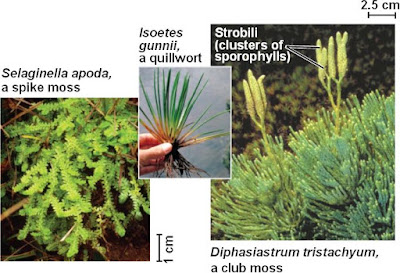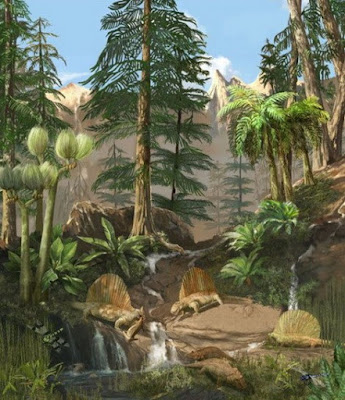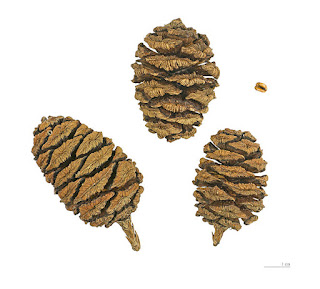Lifestyles of Lycophytes
From the mid Devonian, to the end of the Carboniferous
period, 394 to 294 million years ago, the evolution of the vascular system
allowed terrestrial flora to dramatically evolve from relatively small stature
to towering spore producing trees, up to 40 m high and 2 m in diameter (Reece Campbell
2012). During this period there were several major evolutionary clades which
dominated the landscape, some of which are now extinct. These included the
phyla Lignophyte and Pseudosprocnus (Willis McElwain 2014). This post will
focus on the first of the two extant phyla, Lycophyta and Pterophyla.
The most ancient of vascular plants are within the phylum
Lycophyta. This phylum consists of the quillworts, club mosses, spike mosses.Although named as such, due to size and physical appearance, they are not true
mosses, due to the presence of microphylls and dichotomously branched roots
(Rost 1998). Presently there are 1200 species within this phylum. They range
from tropical climates, where they symbiotically thrive as epiphytes, to more
temperate climates, where they cover forest floors (Reece Campbell 2012). In
varying species, gametophytes can either be photosynthetic, living above
ground, or subterranean, living symbiotically with fungi (Reece Campbell 2012).
 |
All Lycophytes have a sporic life cycle, however, sexual
reproduction varies within the phyla. Club mosses, produce bisexual spores
within sporangia which are homosporus, a single size, and are clustered
together as strobili, positioned on upright stems on the tips of the sporophyte
(Rost 1998).
 |
| Club moss lifecycle |
In contrast, both spike mosses and quillworts are heterosporous,
producing two types and sizes of spores, large megaspores (egg), and smaller micro
spores (sperm) (Rost 1998).
 |
| Spike moss and quillwort lifecycle |
Spike and club mosses tend to stay small in
stature, grow horizontally and have small microphylls, whereas quillworts, grow
quite vertically and have grass like microphylls, similar in shape to
monocotyledonous plants (Pearson 1995). Quillworts are the closest relatives to
the large ancient lycophyte trees, which filled swamp like forests during the
Carboniferous period (Evert Eichorn 2013). Our coal sources today, were formed
from the decaying remnants of these ancient lycophytes, which formed into peat,
lignite and ultimately coal through sedimentary processes over the last 290
million years (Willis McElwain 2014).
References
Evert, R.F., Raven, P.H. & Eichhorn, S.E. 2013, Biology of plants, Eighth edn, W.H.
Freeman and Company Publishers, New York.
Pearson, L.C. 1995, The
diversity and evolution of plants, CRC Press, Boca Raton.
Reece, J.B. & Campbell, N.A. 2012, Campbell biology, 9th (Australian version) edn, Pearson Australia,
Frenchs Forest, N.S.W.
Rost, T.L. 1998, Plant
biology, Wadsworth, Belmont, Calif.
Willis, K.J. & McElwain, J.C. 2014, The evolution of plants, Second edn, Oxford University Press,
Oxford.
Echezabalperiod2 2018, Homosporous
lifecycle, image, viewed April 2018, < https://echezabalperiod2.wikispaces.com/Club+Moss>.
Echezabalperiod2 2018, Heterosporous
lifecycle, image, viewed April 2018, < https://echezabalperiod2.wikispaces.com/Club+Moss>.
https://newtechbio2011.wikispaces.com/Lycophyta>.
https://www.youtube.com/watch?v=kdDMvWqzHfw
Biotech guru 2014, Life cycle: Selaginella apoda [Online video] Viewed April 2018



An interesting group of plants. Which of these would be considered the basal or ancestral group in terms of life cycle? Is homospory ancestral, or heterospory?
ReplyDelete